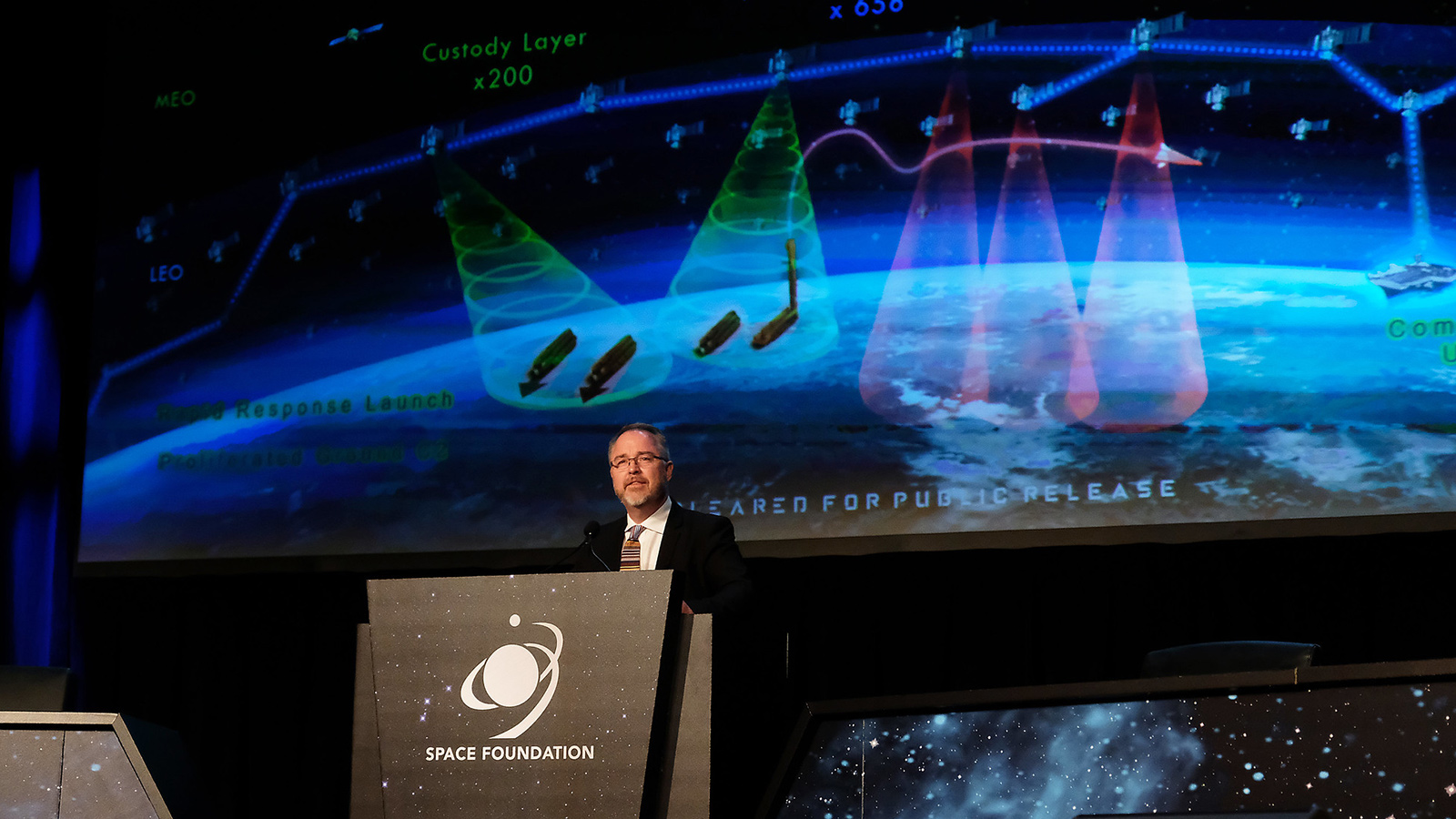Stay Up to Date
Submit your email address to receive the latest industry and Aerospace America news.
SPACE SYMPOSIUM, COLORADO SPRINGS, Colo. — A hot topic here among U.S. defense officials has been how to balance, on one hand, the technical risks of rushing defense satellites into orbit against the risk of getting outpaced by China or Russia.
Two top U.S. defense officials offered starkly different views.
On Tuesday, Fred Kennedy, the director of the Space Development Agency, said the U.S. needs to move away from the “risk-averse” culture that prioritizes performance and reliability over rapid responses to perceived threats. SDA wants to quickly erect constellations of numerous small satellites in low Earth orbit, a strategy that it’s calling “proliferated LEO.”
“The idea is, hey, we have peer competitors who are rolling forward with multiple threats … to evade our sensors or to come directly against our space assets,” Kennedy said at a roundtable with reporters. “At the same time, we have a culture in the national security space community which doesn’t easily respond to that pace of threat.”
Air Force Secretary Heather Wilson, meanwhile, highlighted a different risk in remarks the same day.
She cautioned that “launching hundreds of cheap satellites a year as a substitute for the complex architectures where we provide capabilities to the war fighter will result in failure on America’s worst day if we rely upon them alone.”
Wilson appeared to be referring to SDA’s proposal to erect a megaconstellation of hundreds of small communication satellites to be called the space transport layer, in an effort to reduce the military’s reliance on a handful of large communications satellites.
SDA is nevertheless moving forward with planning for that and other constellations following its establishment last month. Acting Secretary of Defense Patrick Shanahan, in a memo, granted the agency broad powers to develop and acquire satellites and equipment to develop “next-generation military space capabilities.”
Current plans call for establishing the transport layer in low Earth orbit by 2022 as SDA’s first priority. Also in discussion is a new “suite of sensors” that would “extend situational awareness all the way to lunar orbit,” according to Kennedy. He said America’s planned return to the moon by 2024 necessitates a system dedicated to “real-time space traffic management.”
“We’re approaching a point where we’re going to have a community and an industry that’s going to extend as far as the moon, and DoD will have to follow,” he said. “We need to be tracking what’s going on; we need to be able to do that. We need to be able to address that problem.”
Kennedy wants to draw on commercial innovations to “rapidly put up capability.”
“It seems like we’re kind of at a cusp right now, a turning point, where we have an opportunity to jump on, work with the commercial sector to go do this stuff — or not,” he told Aerospace America in a Monday interview. “If we don’t, I think we missed a golden opportunity to get our hooks in and sort of ride the commercial wave.”
But before he gets the $149.8 million laid out in the Pentagon’s 2020 budget request, Kennedy has to refine his plans. He’s working on a proposal for the LEO megaconstellation, which he has until Sept. 30 to deliver to the Pentagon. The details of that plan will lay out the personnel and resources to start executing the transport layer.
With Wilson’s departure as Air Force secretary scheduled for May 31, the question now is whether the new secretary will bring the Air Force onboard more firmly to collaborate with the SDA. The White House hasn’t nominated a replacement or announced who would serve as acting secretary after Wilson leaves.
“Our responsibility is to provide the president options during all phases of conflict so that America continues to dominate in space,” Wilson said Tuesday.
About cat hofacker
Cat helps guide our coverage and keeps production of the print magazine on schedule. She became associate editor in 2021 after two years as our staff reporter. Cat joined us in 2019 after covering the 2018 congressional midterm elections as an intern for USA Today.
Related Posts
Stay Up to Date
Submit your email address to receive the latest industry and Aerospace America news.




